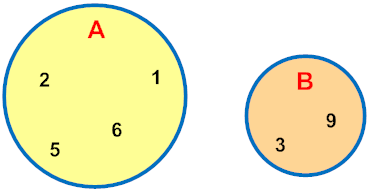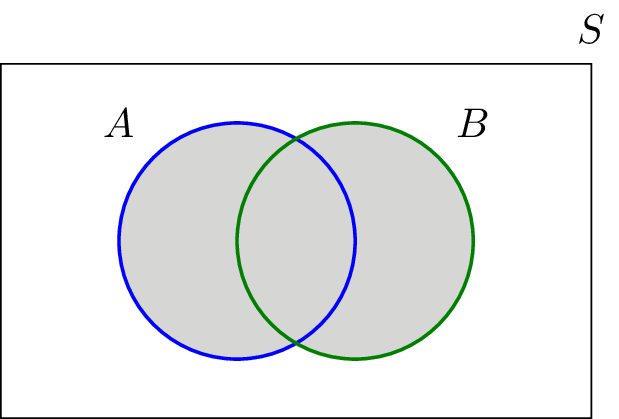Set Theory
Set : A set is a well-defined collection of objects.
Types of set:
⇒ Roaster or Tabular form
⇒Set builder form
- The Empty set : It is also called void set or null set.It is denoted by {} or Φ.
- Finite and Infinite set : A set which consists of a finite number of element is called finite set . Otherwise the set is called an infinite set.
- Subset : A set A is said to be a subset of set B.It is denoted by A⊂B if a ∈ A ⇒a ∈ B.
We denoted : Set of real numbers by R Set of natural numbers by N Set of integer by Z Set of rational numbers by Q Set of irrational numbers by T

Power Set
A Power Set is a set of all the subsets of a set. It is denoted by P(S).
the Power Set of {a,b,c}:
P(S) = { {}, {a}, {b}, {c}, {a, b}, {a, c}, {b, c}, {a, b, c} }
The Universal Set
In previous lessons, we learned that a set is a group of objects, and that Venn diagrams can be used to illustrate both set relationships and logical relationships.
Example 1: Given A = {1, 2, 5, 6} and B = {3, 9}, what is the relationship between these sets?
A and B have no elements in common. This relationship is shown in the Venn diagram below.

Answer: A and B have no elements in common. These sets do not overlap.
VENN Diagrams
A Venn diagram in which the area of each shape is proportional to the number of elements it contains is called an area-proportional or scaled Venn diagram.
Set Operations : The four basic operations are:
1. Union of Sets
2. Intersection of sets
3. Complement of the Set
4. Cartesian Product of sets
The union of two sets is a set containing all elements that are in
or in (possibly both). For example, . Thus, we can write if and only if or . Note that . In Figure 1.4, the union of sets and is shown by the shaded area in the Venn diagram.

Definition of Intersection of Sets:
Intersection of two given sets is the largest set which contains all the elements that are common to both the sets.
To find the intersection of two given sets A and B is a set which consists of all the elements which are common to both A and B.
The symbol for denoting intersection of sets is ‘∩‘.
For example:
Let set A = {2, 3, 4, 5, 6}
and set B = {3, 5, 7, 9}
In this two sets, the elements 3 and 5 are common. The set containing these common elements i.e., {3, 5} is the intersection of set A and B.
The symbol used for the intersection of two sets is ‘∩‘.
Therefore, symbolically, we write intersection of the two sets A and B is A ∩ B which means A intersection B.
The intersection of two sets A and B is represented as A ∩ B = {x : x ∈ A and x ∈ B}
Solved examples to find intersection of two given sets:
1. If A = {2, 4, 6, 8, 10} and B = {1, 3, 8, 4, 6}. Find intersection of two set A and B.
Solution:
A ∩ B = {4, 6, 8}
A ∩ B = {4, 6, 8}
Therefore, 4, 6 and 8 are the common elements in both the sets.
Some properties of the operation of intersection
(i) A∩B = B∩A (Commutative law)
(ii) (A∩B)∩C = A∩ (B∩C) (Associative law)
(iii) ϕ ∩ A = ϕ (Law of ϕ)
(iv) U∩A = A (Law of ∪)
(v) A∩A = A (Idempotent law)
(ii) (A∩B)∩C = A∩ (B∩C) (Associative law)
(iii) ϕ ∩ A = ϕ (Law of ϕ)
(iv) U∩A = A (Law of ∪)
(v) A∩A = A (Idempotent law)
(vi) A∩(B∪C) = (A∩B) ∪ (A∩C) (Distributive law) Here ∩ distributes over ∪
Also, A∪(B∩C) = (AUB) ∩ (AUC) (Distributive law) Here ∪ distributes over ∩
Also, A∪(B∩C) = (AUB) ∩ (AUC) (Distributive law) Here ∪ distributes over ∩
Notes:
A ∩ ϕ = ϕ ∩ A = ϕ i.e. intersection of any set with the empty set is always the empty set.

No comments:
Post a Comment